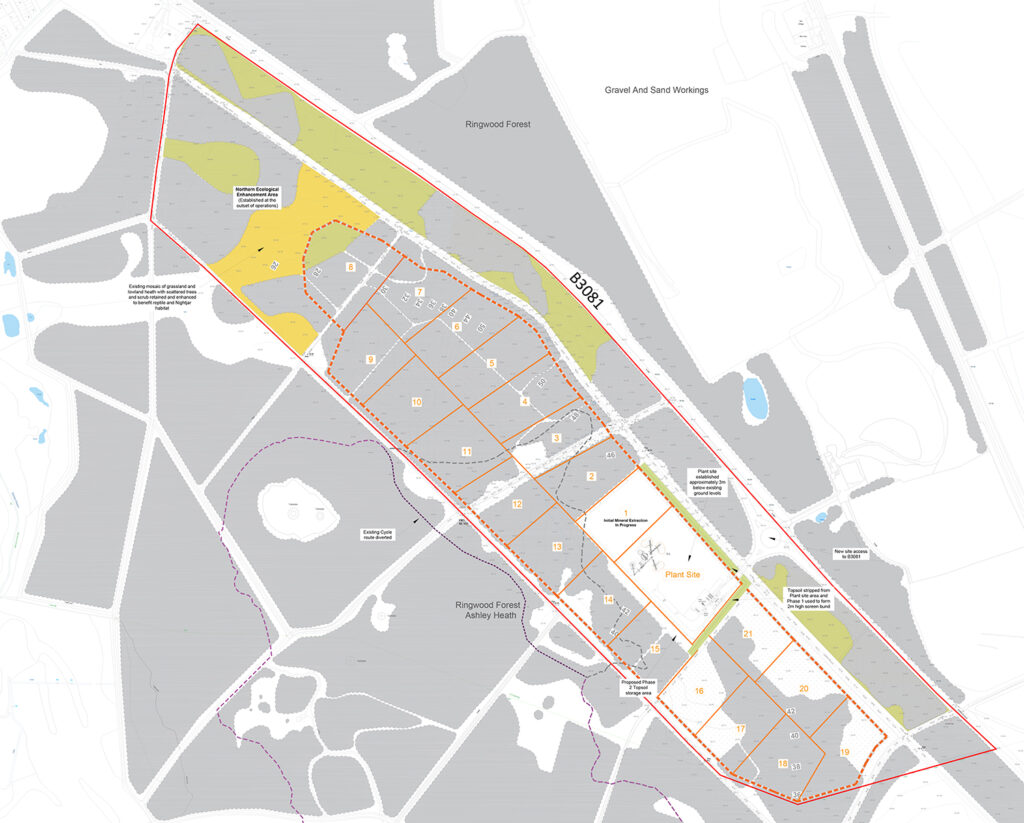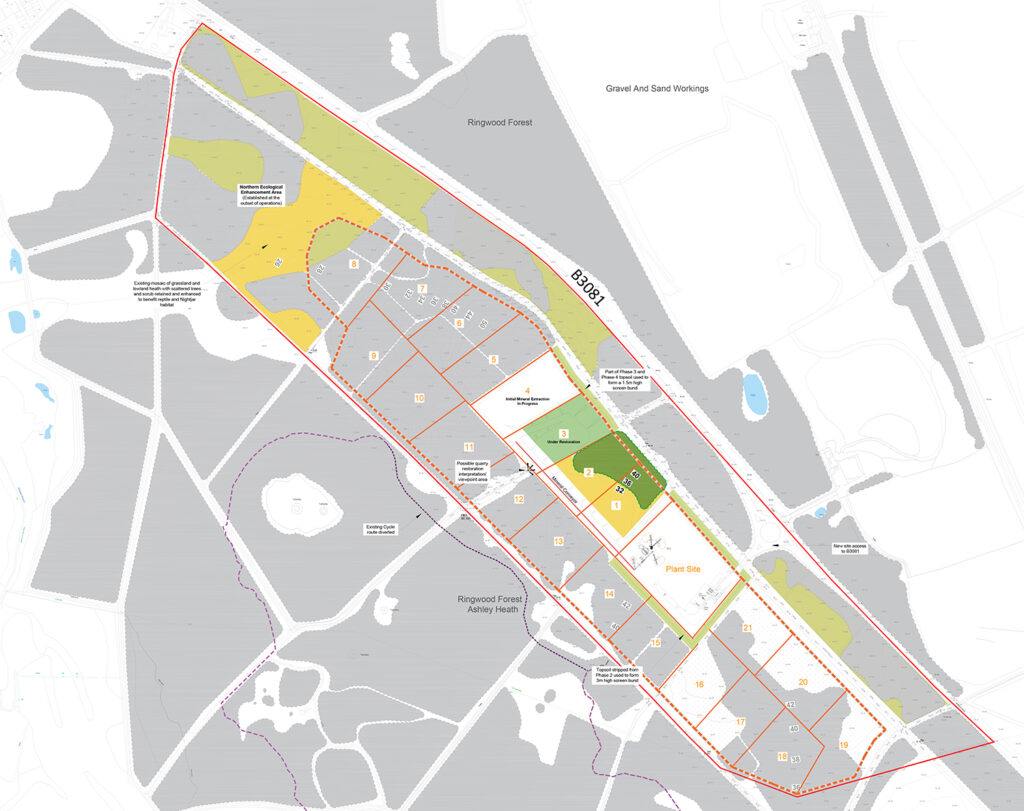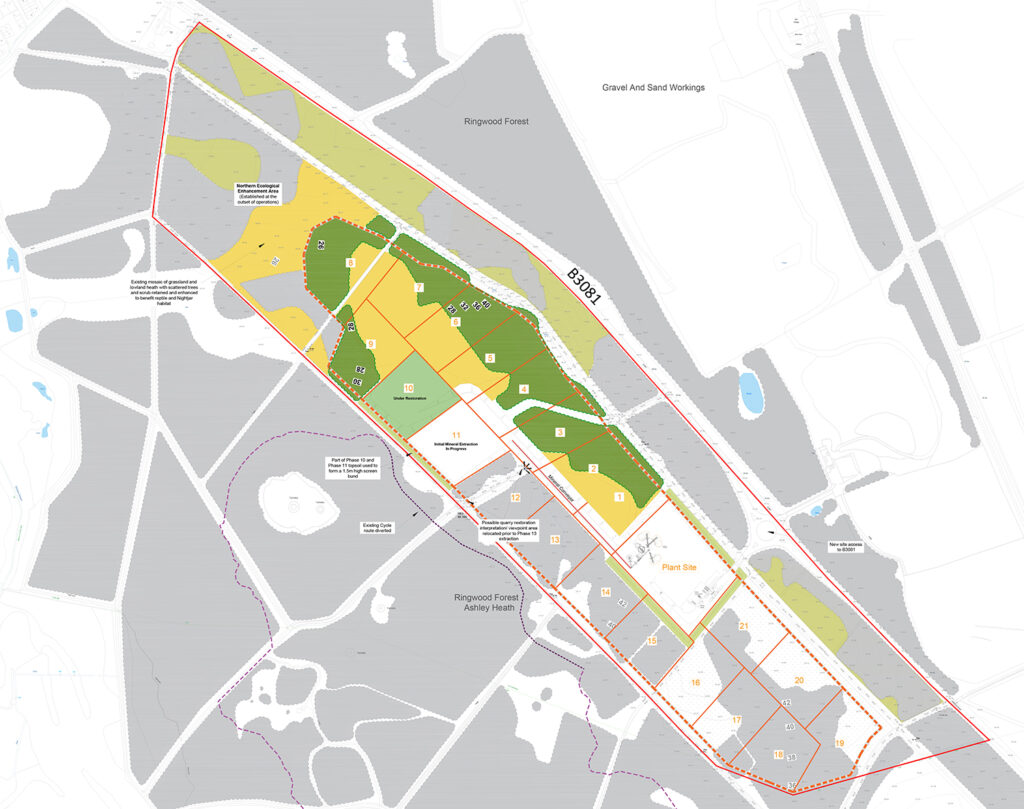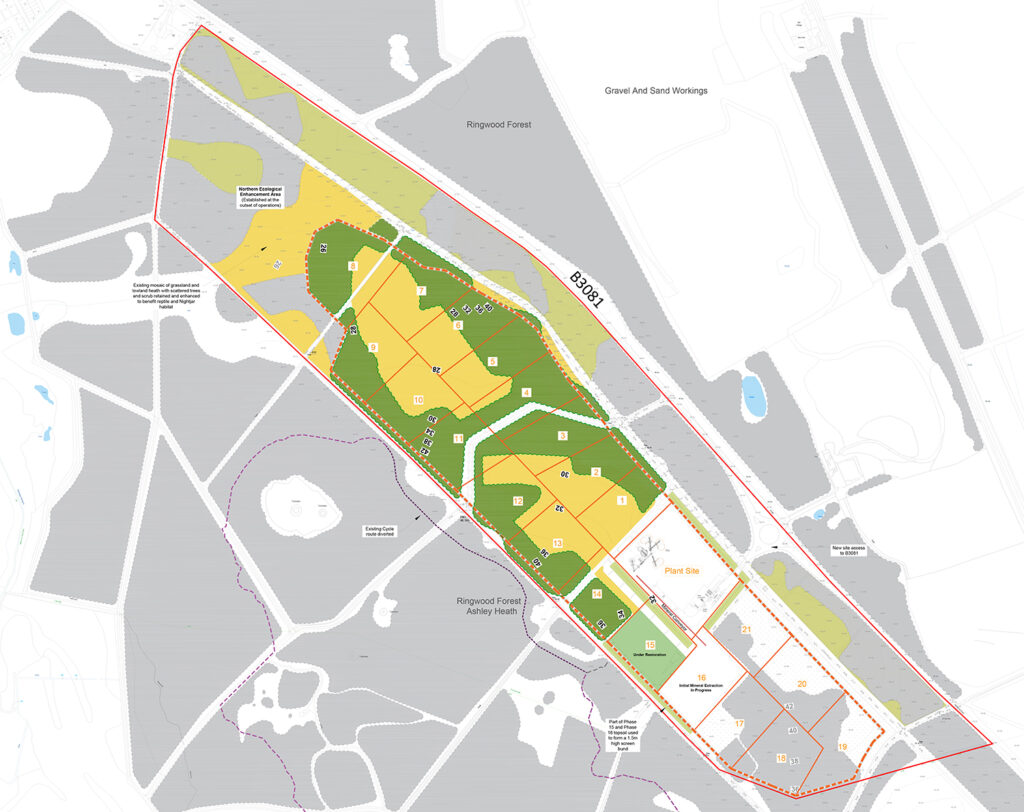methods of working
Work would start with the construction of the new access and sand processing area – and the preparation of phase 1 for extraction.
The processing area would include an electric powered sand screening and wash plant with associated product stockpiles, vehicle weighbridge, office and equipment storage compound.
The processing plant is typically 5-6 metres in height with some points at 8m, which is the height of a two-storey house.
The plant capacity is designed to process up to 200,000 tonnes per year of sand. Typically 1-2 months volume of sales would be kept in stock stored next to the plant for customer loading and collection.
The processing and stock area would be lowered by 3 metres and a 2 metre-high soil screen placed around to help visually screen the area.
The processing plant has two functions, to clean the sand (taking out any clay and silt fines) and to size the sand to meet customer needs. This is achieved by passing the sand over vibrating screens to separate the material.
Part of this operation includes washing the sand to remove silt from some of the sand. This water is recycled in a closed loop process to remove the silt, which is then used in site restoration.
Before starting the initial works, the processing area and phase 1 would be fenced, to facilitate reptile trapping.
An ecology fence would create a reptile barrier to prevent further movement in or out of a designated area. Any reptiles within the area would be relocated to a specially prepared area to the north of the site, where there would be no extraction.
Vegetation and soils are removed once trapping is complete and placed into store around the processing area and phase 1. These soils would be retained around the processing area for its restoration and to help visually screen the area.
During soil removal archaeologists are present to record any finds which are reported to Hampshire County Council.

Sand is extracted from phase 1 using an excavator and transported to the processing area by dump truck. During the extraction of phase 1 the electric conveyor will be installed and used for the subsequent transport of sand to the processing area.
Before moving into phase 2 the area would be surrounded by an ecology fence. As per phase 1, reptiles would be caught and relocated to enhanced habitat outside of the extraction area.
The vegetation and soils are removed, again under archaeological supervision, with soils placed into store on the edge of the phase and at the processing area for later reuse. Phase 2 is then available for extraction that is undertaken by the excavator with a dump truck to transport the sand to the conveyor.
This process is repeated for each phase with removed soils used for the restoration of the earlier phase so that the soils removed from phase 3 are used to restore phase 1, phase 4 to phase 2 and so on.

To keep extraction above the maximum water levels, each area would be regularly surveyed.
We know we will find approximately 500,000 tonnes of clay spread across the site. This will be used as we find it, for restoration of the perimeter slopes.
Once the sand is extracted and the clay placed the area is graded to provide an even surface on which to spread the restoration soil.
Soil stripping operations in any phase are likely to last for up to 2 weeks in any year and are usually undertaken in the spring or autumn. The equipment used comprises of an excavator to remove the soil, a dump truck to move the soil to the place of use and a second excavator that spreads the soil to an even depth over the base.


